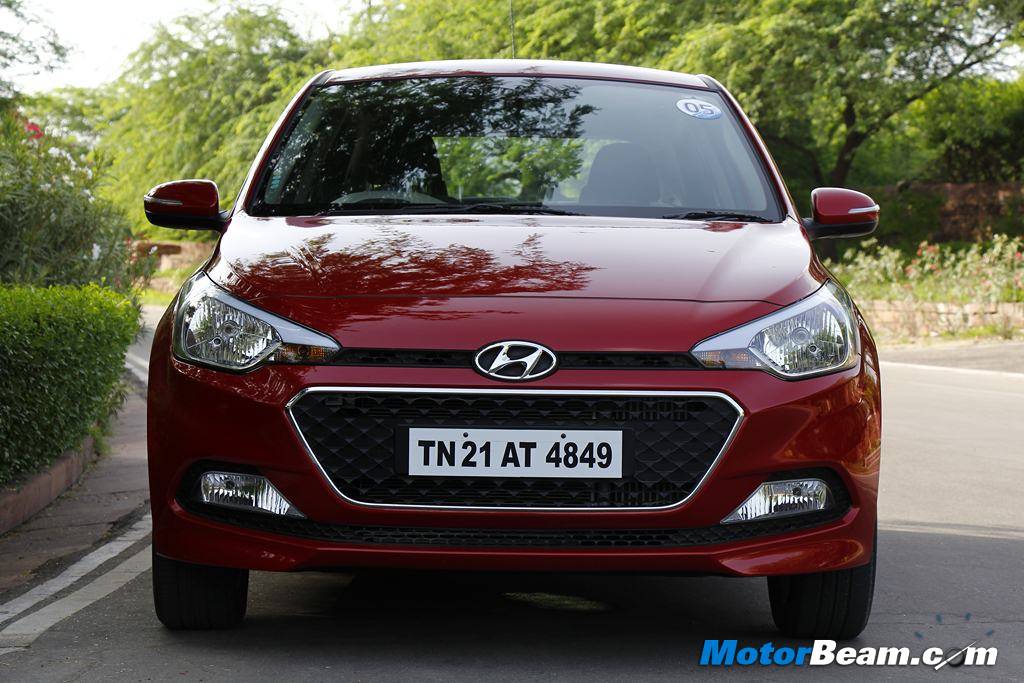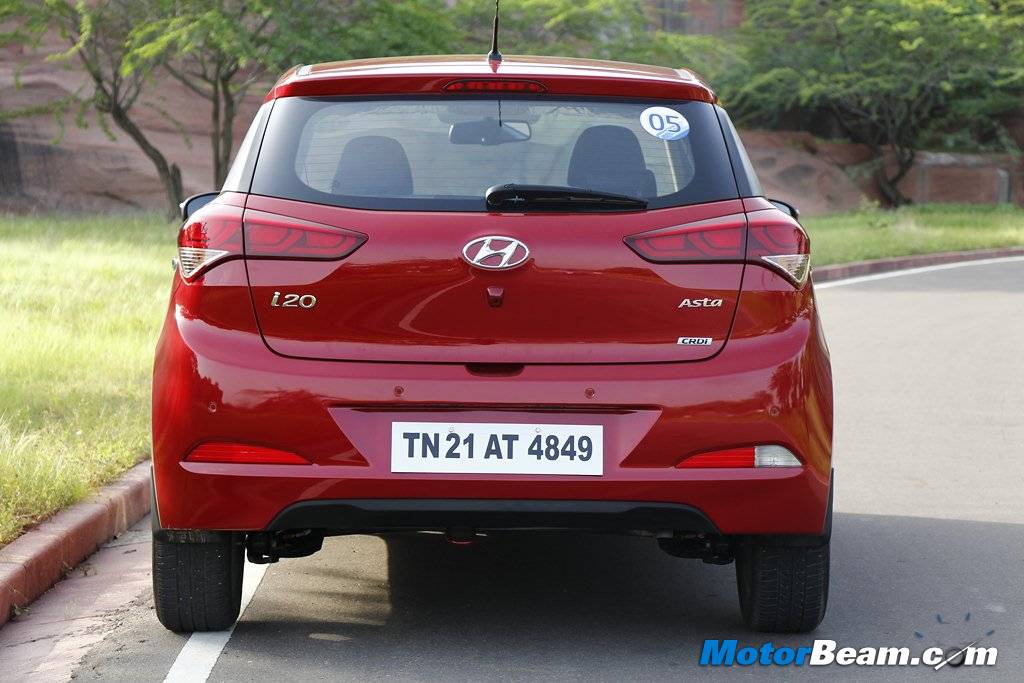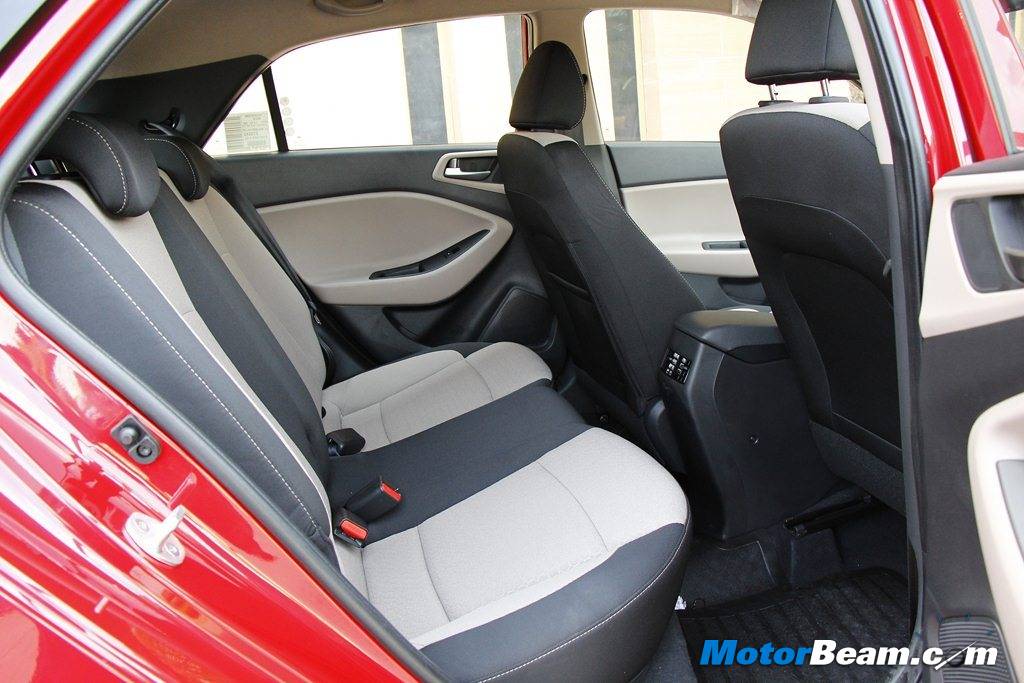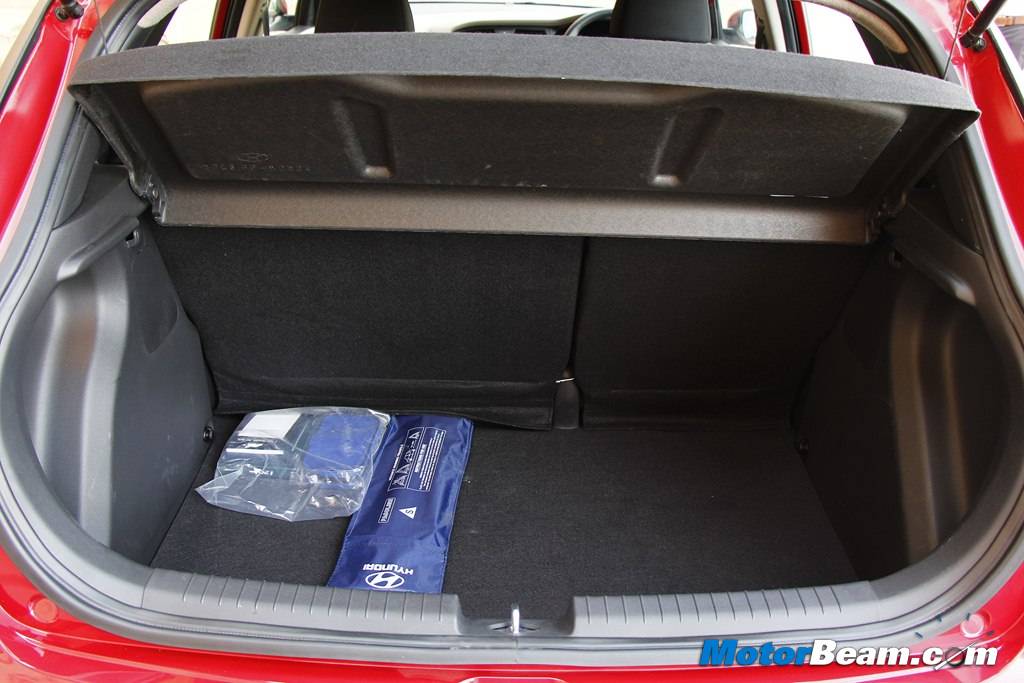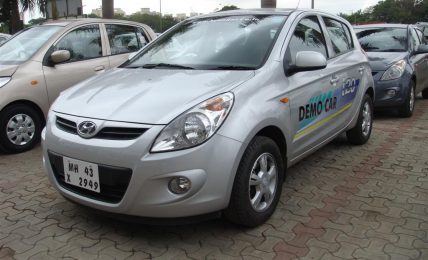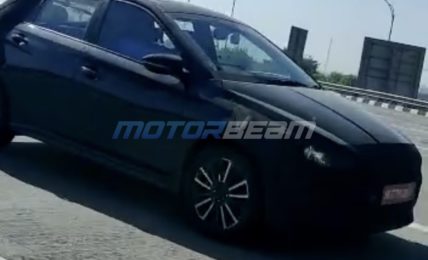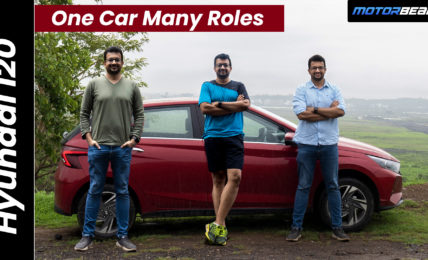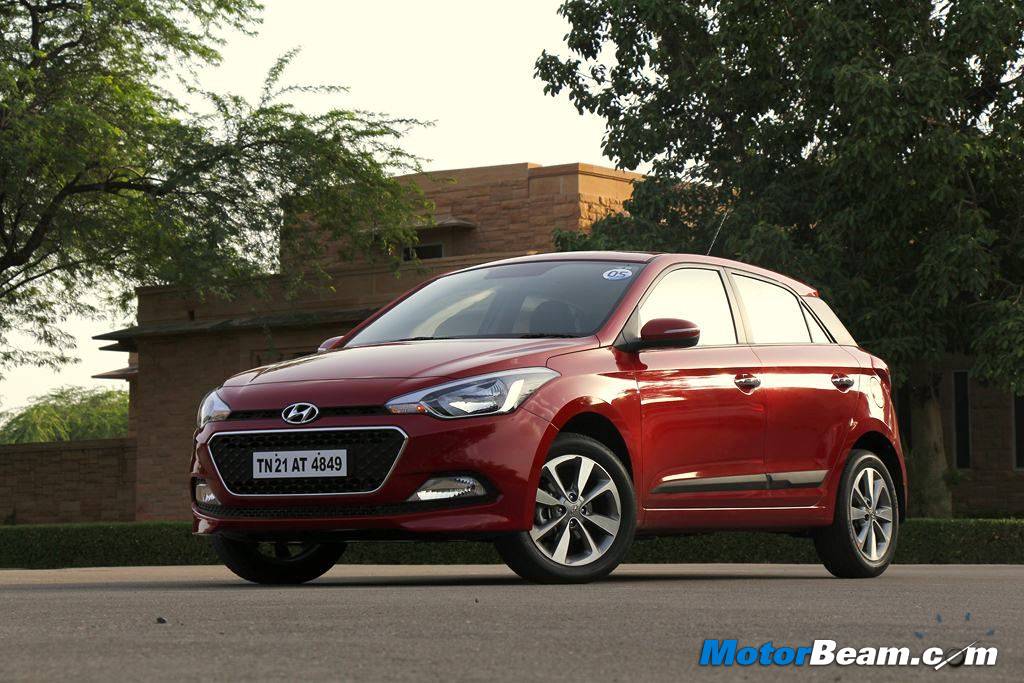
Hyundai Elite i20 Review
Car Tested: 2015 Hyundai Elite i20
Price OTR Mumbai: Rs. 5.82 – 9.30 lakhs
The Elite i20 is an evolutionary hatchback, this Hyundai makes all its competitors shiver
Hyundai entered the Indian market at the right time and in a right way. The carmaker’s first offering, the Santro was introduced in 1998 that gathered tremendous appreciation for breaking the monotony or you can say monopoly with its unique features, distinctive styling and competitive price. Things haven’t changed much since then, Hyundai is still known for introducing new features in the segment while giving big importance to styling and keeping the price competitive. We have seen the immense popularity of the Hyundai i20 in the Indian market despite being positioned in the premium hatchback segment. Now, with the world debut of the second generation i20 in India, Hyundai feels confident to tug the heart strings of buyers in the ‘elite’ way. We explore the new Hyundai Elite i20 in Jodhpur, City of Maharajas to see whether it lives up to the expectations or not.
Motor Quest: The Hyundai i20 was introduced in India in 2008 that was intended to replace the Hyundai Getz from many markets. In 2012, Hyundai India launched a significant facelift of the i20 that was known as i-Gen i20, which came with the fluidic design philosphy version 1.0. The new Hyundai Elite i20 gets the version 2.0 fluidic design theme that reveals a more dynamic and powerful stance.
Exteriors – Hyundai believes the previous generation i20 had a youthful, sporty and hi-tech stance and now while retaining the same characteristics of the styling, they are promoting the Elite i20 with a bold, dynamic and powerful image. We agree with them because it looks powerful indeed and has mature design elements that grow on you with time. The front profile looks imposing with the hexagonal grille having a honeycomb mesh and chrome outlining. The wide swept back headlamps integrate reflectors on the top that act as faux daytime running lights because DRLs are not being offered with the new gen i20 as opposed to the outgoing model. The bonnet has strong creases that add to the visual appeal. There is a pause between the bonnet and bumper on the nose that houses the Hyundai badge neatly. At the lower end you’ll find trapezoidal fog lamps with sharp bumper lip.
Black C-pillar, diamond-cut alloys and racy stance are the highlights of its side profile
The Elite i20 looks upmarket and mature with the new design language
The side profile reveals the sporty stance of the Elite i20, which appears forward leaning. The 16-inch ‘diamond cut’ alloys look premium and fill the wheel arches very well while the ORVMs have integrated turn indicators. There is a strong shoulder line that emerges from the headlights and continues upwards to the tail lights. The blackened B and C pillars gives the sense of a floating roof and we quite like it but it is a ‘love it or hate it’ styling cue. It’s integrated neatly to the body but the panel itself feels plasticky and boxy when you knock it. That said, the rear styling of the Elite i20 definitely grabs attention with its broad stance and big car feel. The three step detailing on the huge tail lamps looks upmarket and the bumper gets busy styling integrated with reflectors and one side reverse lamp. The rear parking camera is protruding in the middle and further down is the hatch opening button. The Hyundai logo integrating the button with a hidden camera would have made the tailgate look cleaner. The Elite i20 is 10 mm shorter and 24 mm wider with a 45 mm longer wheelbase.
The dual-tone dashboard looks premium that has a rich feeling of materials used
Interiors – Step inside the cabin and the first thing to notice is the beautifully layered dashboard with beige and black colour tones. The design of the dashboard is driver oriented which makes you feel connected to the centre console. The design of the three-spoke tilt and telescopic steering wheel can also be seen on the Grand i10 but this one has a different layout of controls and chrome outlining on the horn pad. The instrument cluster is neat and falls easy on the eyes with analogue tachometer and speedometer having digital temperature and fuel gauge on either side. The party piece of the instrument cluster is the MID screen in the middle that displays a host of information you can’t think of for a car in this segment, no wonder Hyundai calls it supervision cluster. It has steering position reminder so that you are aware of the wheels before you start moving, you can set your service reminder, it also has parking sensor display, doors open/close display, settings for auto unlock, dual tripmeter, gear shift indicator and much more. However, instantaneous fuel consumption, distance to empty and average fuel consumption is shockingly missing.
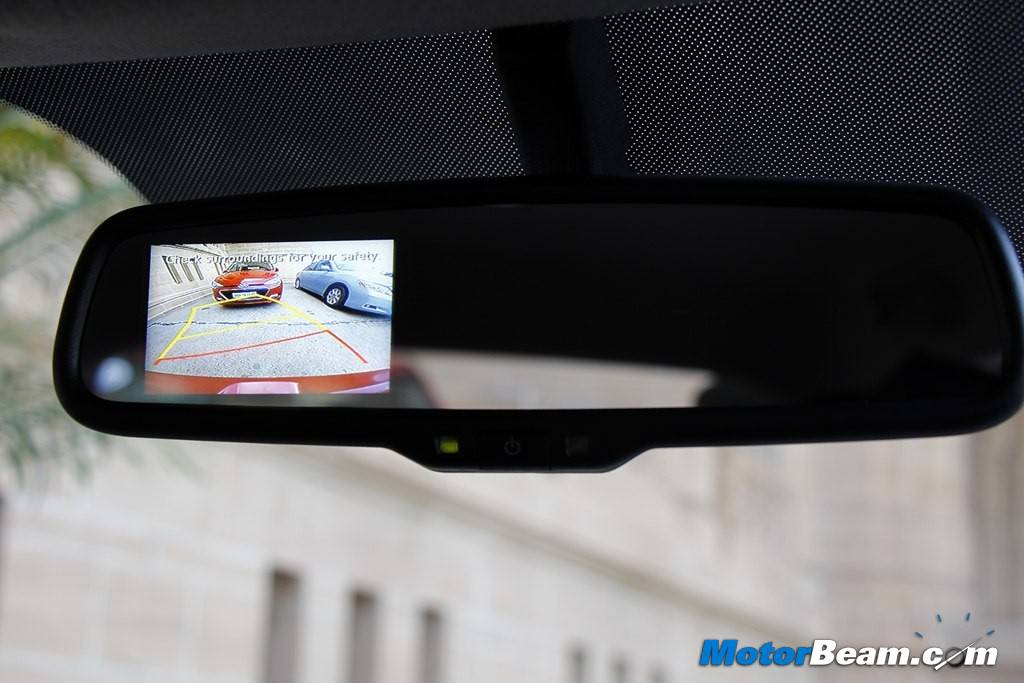
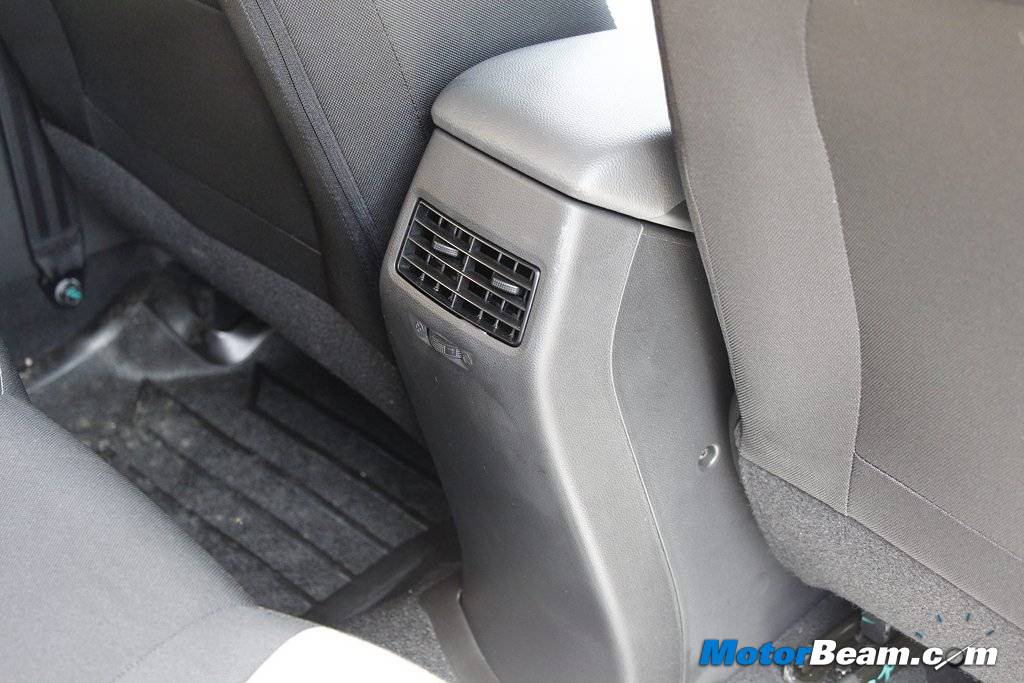
Rear camera with steering adaptive guidelines and rear AC vents are some of the unique features in this segment
The electro-chromatic rearview mirror gets a neat display for rear parking camera with steering adaptive guidelines. There are anti-pinch power windows as well that automatically fold down if obstacles are detected. You have keyless entry with push button start so keep the key in your pocket, press the request sensor on the door handle to lock/unlock the car and push the button to start/stop the engine. The AC vents are positioned ergonomically and the steering doesn’t obstruct the air flow for the driver. Automatic climate control works smoothly and chills the cabin within no time. The centre console has a serene uncluttered design and each button and control are placed ergonomically. The big letdown though is the tiny digital screen in the middle. Buyers nowadays expect a fancy touch screen with a whole lot of drama inside for a high-tech infotainment experience. Nevertheless, the Elite i20 comes with a 2-DIN audio system with CD, AUX, USB and Bluetooth connectivity and additionally 1 GB of internal storage space. It has 4 speakers with 4 tweeters and the audio quality feels quite crisp and rich. The Bluetooth can stream calls and music from your Smartphone and all the audio and supervision cluster controls can be found on the steering.
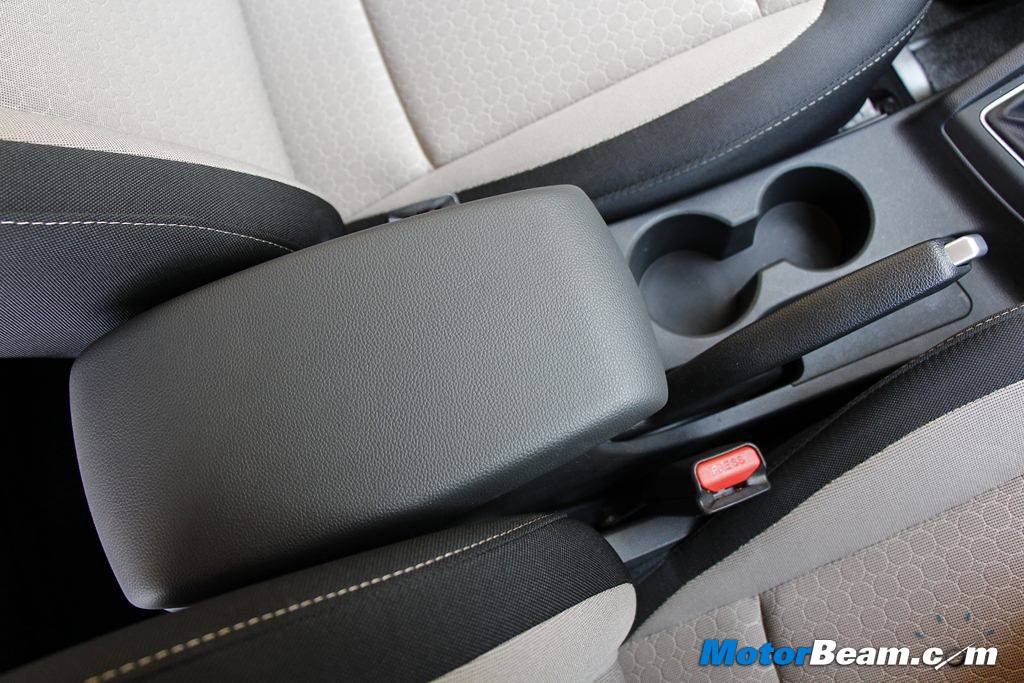
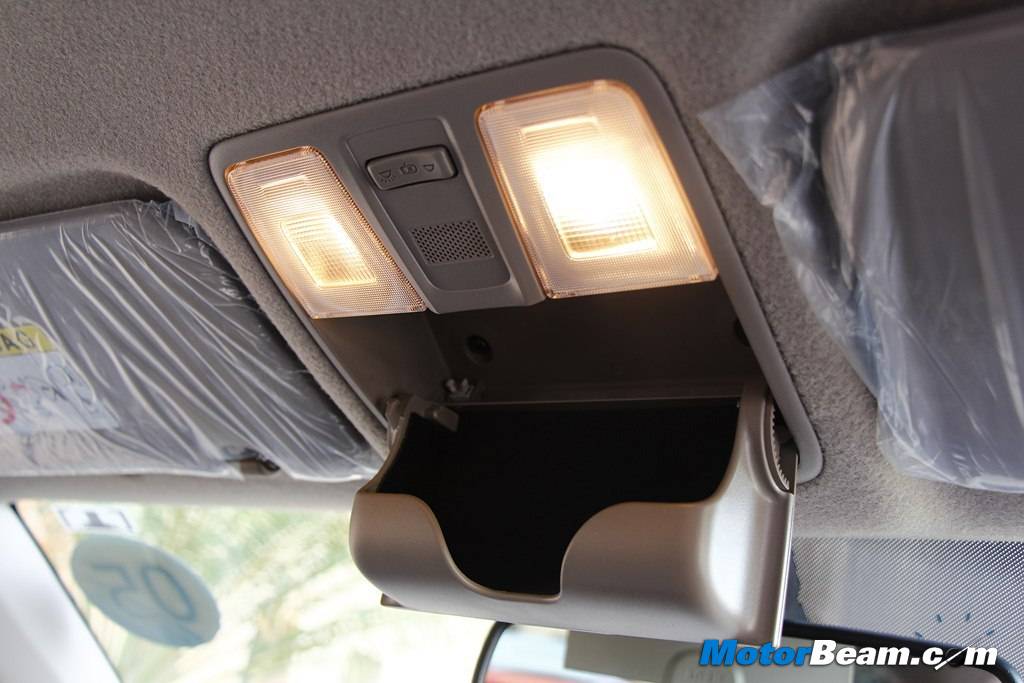
Ample storage space inside the cabin for knick knacks including sunglass holder and front arm-rest storage
A longer wheelbase has carved out more space inside the i20’s cabin
The central locking button is placed in the middle of the centre console just above the hazard lights but sadly there is no speed sensing auto door lock. So you have to reach the button every time you get going. There are two 12V sockets placed on the lower end of the centre console. The newly designed gearknob feels good to hold with rich materials. The quality, fit and finish is superb and has further improved quite some notches above the outgoing model. The plastics have a smooth touch, controls and switches have tactile feedback including the stalks that are a pleasure to use. Speaking of stalks, it now has lane changing one-touch indicators and auto-headlamps with escort function but sadly no rain sensing wipers. The seats at the front are very comfortable that have good back and neck support with ample under-thigh support. The driver’s seat is height adjustable with good flexibility. The driver’s foot-well is well spaced out featuring a dead pedal.
At the rear you get generous legroom, which has improved because of the longer wheelbase. The seatback angle is comfortable, you have height adjustable headrests and the back support is good along with ample headroom but on both the extreme sides you don’t have thigh support because there is a gap between the seat and door pad. Three abreast can sit easily with an almost flat floor, rear AC vents work well to keep passengers comfortable at the back but the rising window line could make short people claustrophobic. There is enough storage space for everything to fit in the right place. There are cupholders in the front, ample door pockets, ticket holder in the centre, space in front of the gearlever for phones and iPods, front arm rest storage, sunglass holder on the top, rear seatback pocket but only behind the passenger seat and cooled glovebox which is generous in size. The 285 litres of boot space is accommodating but a tad smaller in size (reduced by 10-litres) compared to the previous i20 but you have 60:40 split seats at the rear for better flexibility.
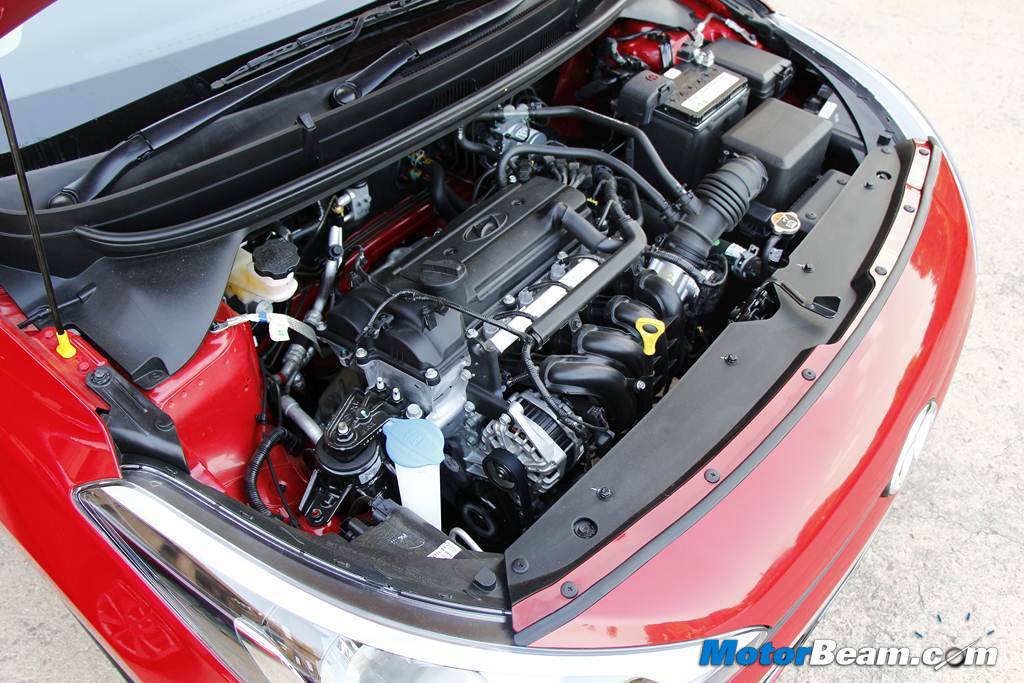
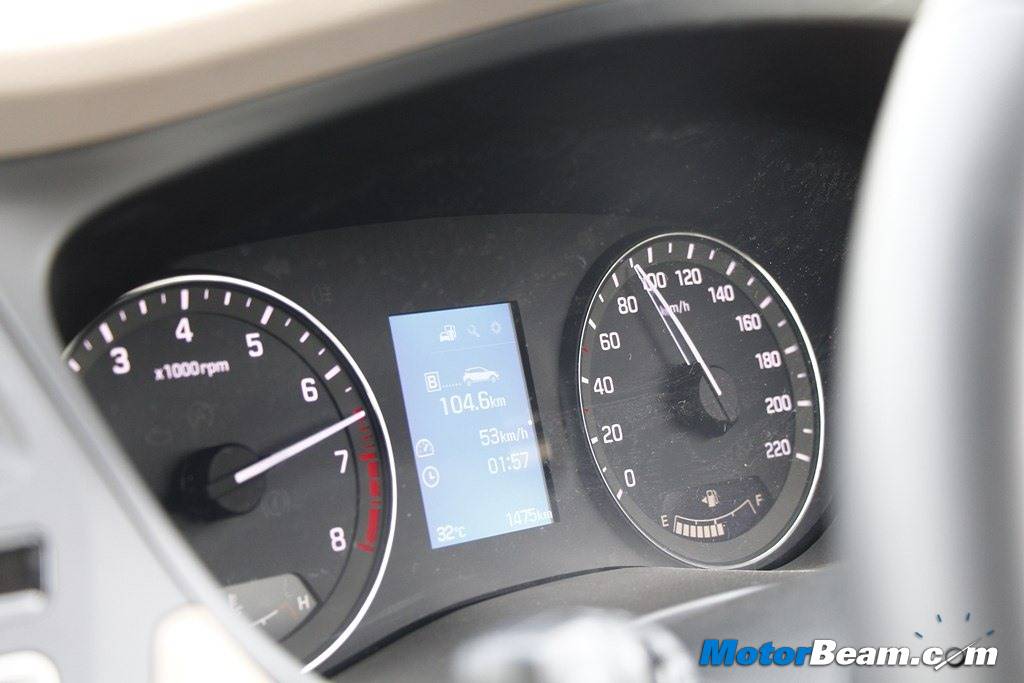
The 1.2-litre Kappa petrol engine is extremely refined but needs to be revved hard for outright performance
Performance – The engine options are carried forward from the outgoing model, excluding the 1.4-litre petrol with a 4-speed automatic gearbox. Power output remains unchanged but both the engines are optimised for better power delivery and lower emissions. The 1.2-litre Dual VTVT Kappa produces 83 PS at 6000 RPM and 115 Nm of torque at 4000 RPM. The VTVT mechanism is applied to both inlet and exhaust port that optimises opening and closing of valves, improving efficiency and reducing emission. It also has electronic throttle control valve that ensures consistent performance with varying load conditions. The petrol engine is quite refined and quiet. Power delivery is smooth and linear throughout the rev range and it revs freely. The grunt is good enough for city commuting and sedate driving style but to get the most out of it you have to keep the engine on the boil.
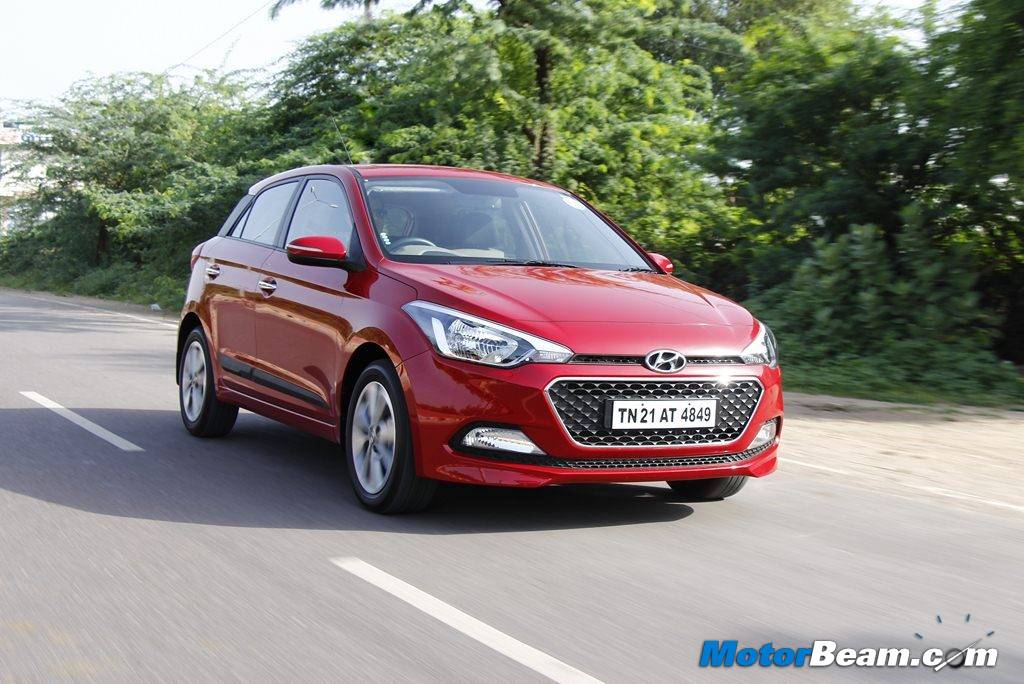
The Kappa engine is better suited for city and not highways. Mated to the petrol engine is a 5-speed manual gearbox, which is butter smooth and a delight to use with a light clutch for relaxed stop-go driving in traffic. The well-stacked ratios are again city oriented with good in-gear acceleration for initial gears but show it a highway and it feels breathless. Cruising is decent at 100 km/hr in fifth gear that keeps the engine revs around 2900 RPM. One has to prepare for highway overtaking because you need to downshift a gear or two to push forward. NVH level is impressive and the motor doesn’t make much noise inside until redline that comes up at 6500 RPM. There is little wind noise but at expressway speeds. The ARAI claimed petrol fuel efficiency is 18.60 km/l for the Era and Magna variants and 18.24 km/l for Sportz and Asta variants because of the additional weight. Expect real world fuel efficiency of the Elite i20 to be around 12-13 km/l in the city and there shouldn’t be much difference on the highway because it needs to be revved harder.
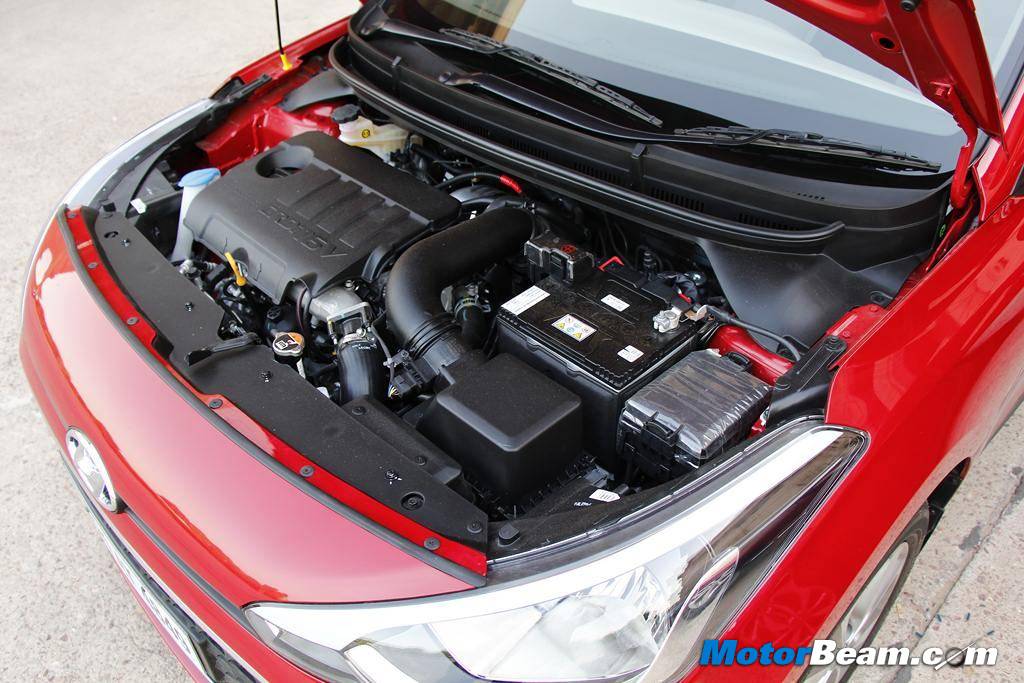
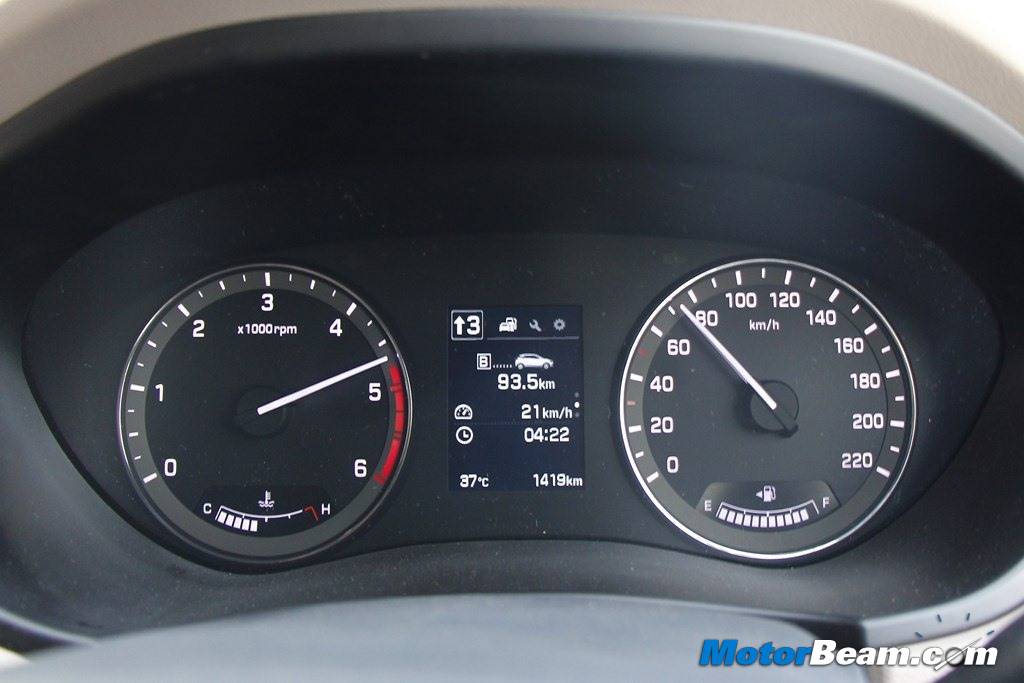
The 1.4-litre diesel has well controlled turbolag and a linear yet strong power delivery for better drivability
Both the engines are very frugal and quite refined
The 1.4-litre U2 diesel engine churns out a healthy 90 PS of power at 4000 RPM and 220 Nm of torque at 1500-2750 RPM. The oil burner has been optimised for better low end grunt for city drivability by controlling the turbo lag and providing linear power delivery. The fuel injector operates at a high pressure of 1800 BAR. Push the button to start the engine and you can immediately feel the refined character of the U2 diesel. We were impressed with the quietness of this diesel engine even with the audio system switched off. Release the clutch and the car starts moving, give it some throttle and you’ll realise how well the turbo lag has been controlled. The power delivery is linear since the beginning and post 1500 RPM you get a gentle surge of torque that continues flat till around 3000 RPM, so it is a fun and effortless highway performer.
The diesel powered Elite i20 is an effortless highway cruiser with a strong mid-range
It’s pretty sharp in city traffic as well and you can cover the gaps quickly with is crisp acceleration. The smooth and brawny torque makes the mid-range a delight to ride on and this oil burner can never make you feel that it’s underpowered, it just goes. The diesel mill is mated to a 6-speed manual transmission for better efficiency. The gearbox and clutch calibration is comfortable and the ratios make it a well balanced car for city as well as highways. However, the first gear feels a bit short while second is tall so in some situations in the city you’ll find yourself shifting between the two frequently. Otherwise in-gear acceleration is excellent and you can overtake on the highways without breaking a sweat. Cruising is effortless as well and doing 100 km/hr in sixth gear will see the motor hovering around the 2000 RPM mark. NVH has improved a lot but the diesel engine gets audible post 3000 RPM until redline that comes at 4750 RPM. ARAI claimed diesel fuel efficiency is 22.54 km/l for the Era and Magna and 21.76 km/l for the Sportz and Asta variants. Expect overall fuel efficiency of 16-17 km/l in real world conditions.
Dynamics have significantly improved, we have no complaints about ride and handling
Driving Dynamics – We have been asked a zillion times about the dynamics of Hyundai cars under our comments section as well as personally. That’s valid because Hyundai cars’ dynamics were quite questionable. You read that right, ‘were’ questionable because Hyundai has taken the feedback quite seriously. We have seen Hyundai addressing the suspension issue of the Verna soon after taking customer feedback. We have also seen considerable improvement with Grand i10’s grownup behaviour compared to the previous gen i10. Now with the Elite i20, we can easily say at the very beginning that there’s nothing to complaint or worry about with the dynamics of this Hyundai. The mature suspension setup makes the ride comfortable and the handling doesn’t give you nervousness.
The suspension soaks the bumps and potholes orderly without bobbing around
Prominent improvement can be felt in the dynamics of the i20 immediately
The suspension setup includes McPherson struts at the front and coupled torsion beam at the rear. The good thing is that at low speeds, ride doesn’t feel firm with a stiffer and taut suspension. Drive slowly on bad roads and potholes, and it feels like chewing a marshmallow. As it gathers pace the ride gets flatter and the rear never tends to bounce now, as seen with the outgoing i20. We have tested the car on huge potholes and big speed-breakers, it only thuds and clunks when you hit them at high speeds without braking and very less vertical movement penetrates inside. It takes broken tarmac and those small sized but irritating plastic rumblers in its stride without hesitation. The 170 mm ground clearance does a fantastic job of keeping the underbelly untouched.
The steering feedback has significantly improved but it’s not as sharp as the Swift
Handling has improved leaps and bounds over the old i20 and it’s much more eager to get into corners. The steering feedback isn’t as sharp as other hot hatches in its segment but is definitely confidence inspiring and a neutral handler. At low speeds the steering is conveniently light for parking or manoeuvring in traffic and as the speed increases, the steering weighs up to give the confidence you need at high speeds. You can cruise at high triple digit speeds without holding the steering tight nervously. The diesel powered Elite i20 feels more front heavy and more planted with better handling. There is little body roll but that doesn’t make it uneasy around the ghats and its negligible. The grip from the 195/55 R16 tyres is worth appreciating. Despite not having rear disc brakes, the braking performance is surefooted with crisp pedal bite and it stops in its line even with hard braking.
Hyundai doesn’t offer six airbags anymore, Elite i20 comes with dual front airbags
Safety – The Hyundai Elite i20 hasn’t been tested by Global NCAP yet but the first generation Euro-spec i20 got a full 5-star crash test rating at Euro NCAP. The sad thing is that Hyundai India doesn’t offer 6 airbags anymore and the Elite i20 now comes with only dual front airbags, that too on the Asta variant, while only Sportz and Sportz (O) get driver side airbag. ABS is also offered only with Sportz, Sportz (O) and Asta variants while the Era and Magna don’t get any safety features. The Elite i20 comes with Smart Pedal that overrides the accelerator pedal during simultaneous operation of brake and accelerator during panic braking. It also comes with impact sensing door unlock feature that unlocks the doors automatically incase of collision.
If you forget the past and believe in the future, the Elite i20 should be your companion
Verdict – The Hyundai Elite i20 offers a well-rounded package without compromising much on any aspect. The pricing is aggressive considering the fact that there is only a minor increase in price over the outgoing model. The mature styling definitely makes it look Elite and at the same time big in dimensions. Hyundai has carved out phenomenal space inside and the dashboard styling is awe-inspiring. However, the carmaker has skipped on some safety features and equipment like LED DRLs, rain sensing wipers, rear disc brakes and so on. On the flip-side they are offering some unique features. The petrol engine is best suited for city runabouts and for people with limited running. If you want to have some fun and hit the highways frequently then the diesel engine should be your choice, which is frugal, fast and more dynamically sound. The dynamics are not for purists but for a wider audience that seek for a comfortable ride with predictable handling. The Elite i20 is a major leap forward and quite a desirable hatchback in its segment.
The first generation Hyundai i20 was a rampant success for the Korean carmaker in India because of its clever positioning and immense value that it offered. We believe the Elite i20 will further lift the fortunes of Hyundai not only because of the styling, features and price but also because of the mature dynamics.
Hyundai has taken your feedback seriously and has worked hard on the dynamics
What’s Cool
* Styling
* Interior quality, design and space
* NVH and diesel engine performance
* Significantly improved dynamics
What’s Not So Cool
* Safety features gone down
* Petrol engine lacks punch
* Some features from last gen model skipped (sunroof, rear disc, DRLs, etc.)
Alternatives: Volkswagen Polo, Maruti Suzuki Swift, Fiat Punto Evo
This key is for people seeking an affordable, stylish, comfortable and youthful hatchback
2015 Hyundai Elite i20 Specifications
* Engine: 1197cc, 16V, Kappa, VTVT (P); 1396cc, 16V, U2, CRDi (D)
* Power: 83 PS @ 6000 RPM (P); 90 PS @ 4000 RPM (D)
* Torque: 115 Nm @ 4000 RPM (P); 220 Nm @ 1750-2750 RPM (D)
* Transmission: 5-speed manual (P); 6-speed manual (D)
* 0-100 km/hr: 13.99 seconds (P); 11.94 seconds (D)
* Fuel Consumption: 13 km/l (Petrol), 17 km/l (Diesel)
* Fuel Type: Petrol; Diesel
* Suspension: McPherson Struts (Front), Coupled Torsion Beam (Rear)
* Tyres: 185/70/14 Steel (Era, Magna, Sportz) 195/55/16 Alloy (Sportz O, Asta)
* Brakes: Ventilated Disc (Front), Drum (Rear), ABS
* Safety: ABS, EBD, Dual Front Airbags, Reversing Camera, Smart Pedals
2015 Hyundai Elite i20 Dimensions
* Overall length x width x height: 3985 mm X 1734 mm X 1505 mm
* Wheelbase: 2570 mm
* Turning Radius: 4.7 metres
* Ground clearance: 170 mm
* Boot Volume: 285 liters
* Fuel Tank Capacity: 45 litres
* Kerb Weight: 1066 kgs (P); 1222 kgs (D)
Further Reading –
Hyundai Elite i20 Long Term Review
Hyundai Elite i20 vs Hyundai i20 Active
Maruti Swift vs Hyundai Elite i20 vs Volkswagen Polo vs Fiat Punto Evo
Hyundai Elite i20 vs Honda Jazz


